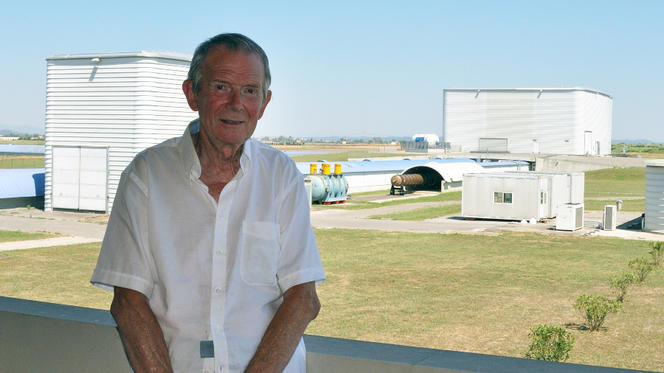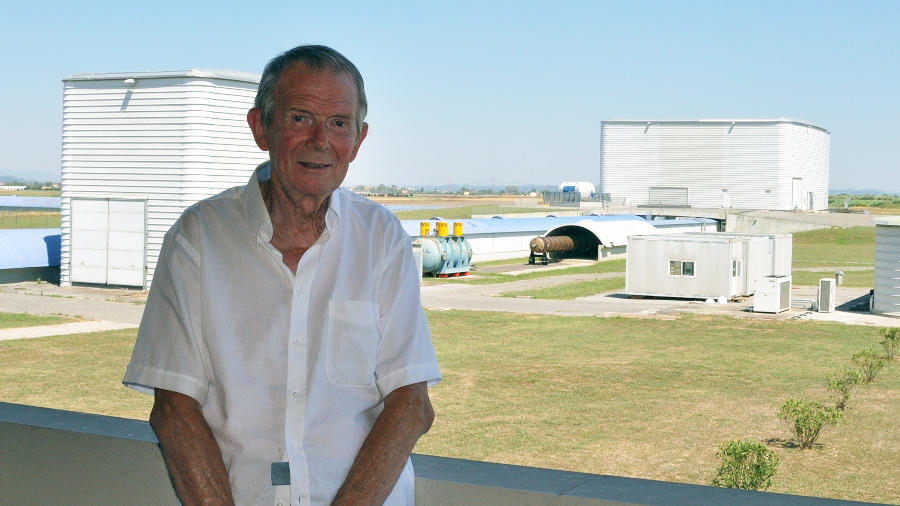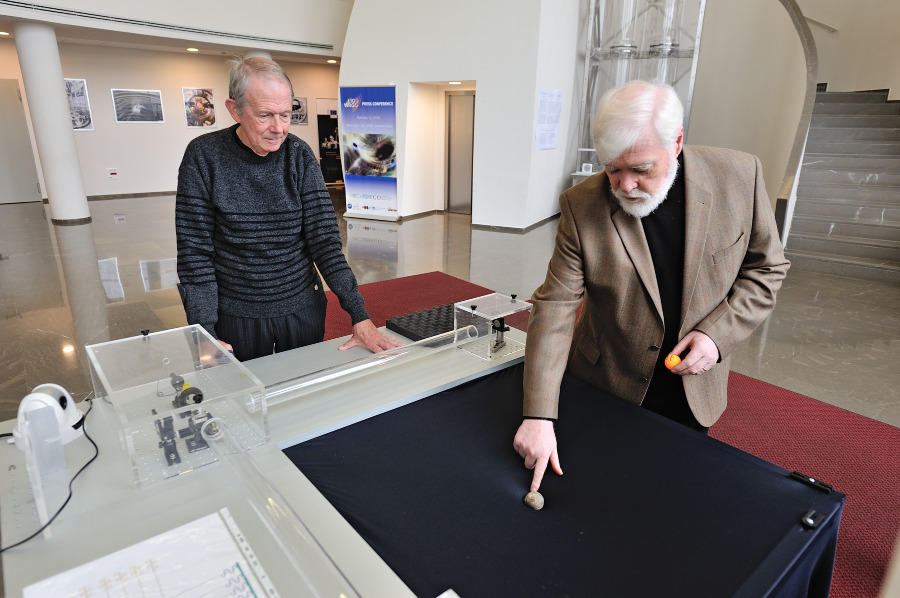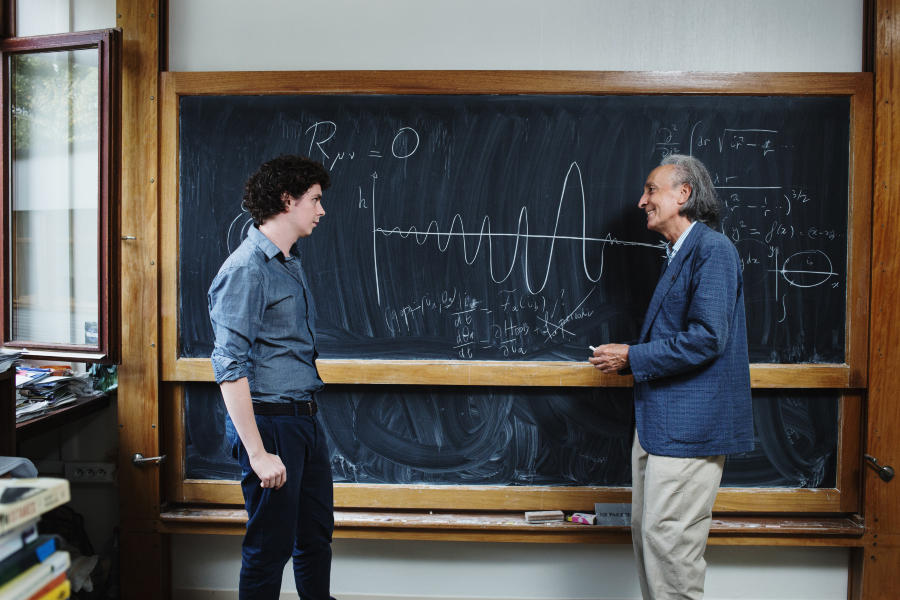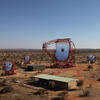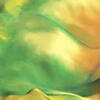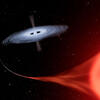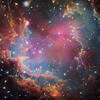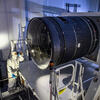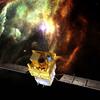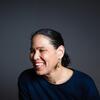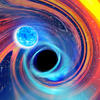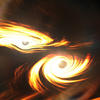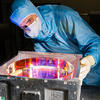You are here
Gravitational Waves Pioneers Get Highest French Science Prize
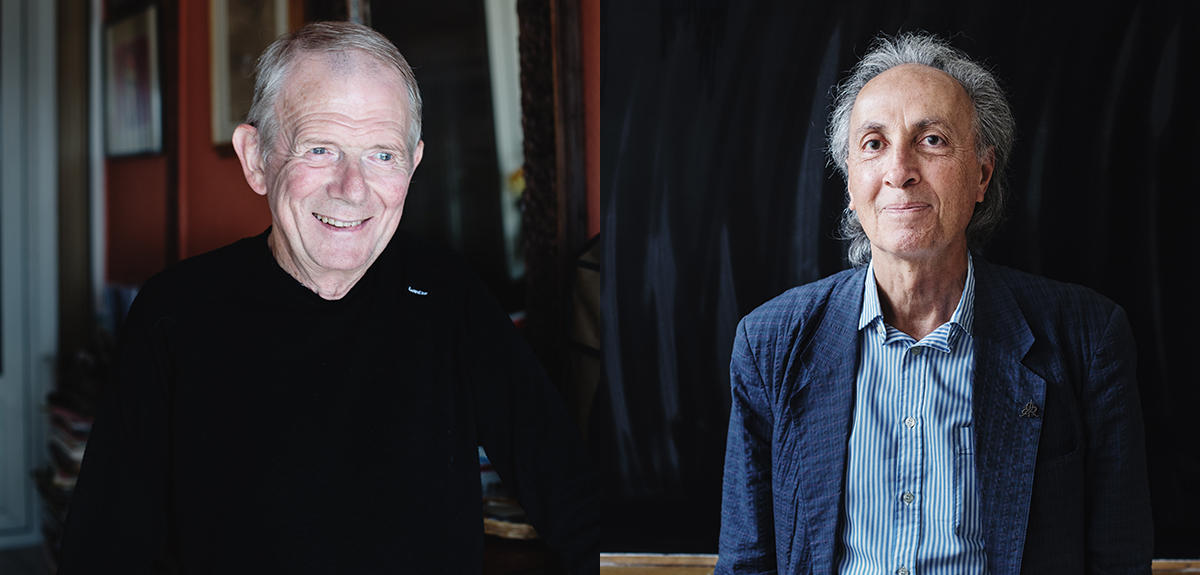
Alain Brillet, an experiment wizard
When asked about his fondest professional memory, Alain Brillet,1 relaxing in the living room of his home in the hills above Nice, does not have to think long: 1992, when Hubert Curien, who was then France’s Minister of Research and Technology, approved the funding of his project to build the Virgo interferometer. It would take another 23 years for the physicists in the LIGO-Virgo collaboration to observe the first gravitational waves—ripples in space-time—generated by the fusion of two black holes. But for Brillet, the hardest part was over: convincing others of the validity of an approach that he, with a determination reflected in his unwavering gaze, obviously never doubted.
Perhaps strangely, nothing seemed to predestine Alain Brillet, who turned 70 this year, for this adventure. As a student at the ESPCI2 in Paris, he found little interest in the courses and afternoon chemistry lab sessions, and turned to physics “somewhat by default at first,” he admits.
After graduating in 1970, he joined the CNRS as a research engineer, accepting the position on the condition that he be allowed to work on his PhD. Assigned to the Laboratoire de l’Horloge Atomique, he was asked to develop frequency-stabilized lasers, whose feasibility had just been demonstrated in the US by John Hall, winner of the 2005 Nobel Prize in Physics. “They said, ‘here’s your subject—we know nothing about it, so do whatever you want,’” Brillet recalls. “Which was fine by me, because I never liked being told what to do.”
A master of precision
In response to someone who said that he made everything look easy, Alain Brillet brushed off the compliment, adding, “I’ve mostly been able to identify the problems.” None of which seems insurmountable for him.
In 1979, while doing postdoctoral work with John Hall in Boulder, Colorado (US), he developed an improved version of the famous Michelson-Morley experiment for testing the isotropy of the speed of light, using ultra-stabilized lasers. The degree of precision that Brillet achieved remained unmatched for more than 25 years! In the process, this self-described “instrument specialist” discovered the Einsteinian concepts of space and time, general relativity and gravitational waves.
Back in France, Thibault Damour and Philippe Tourrenc encouraged him to take on a seemingly impossible challenge: the detection of gravitational waves. “Rainer Weiss had calculated that it would take an interferometer several kilometers long to make them perceptible,” Brillet recounts. “He had carefully worked out the basic specifications, but we needed lasers five times as stable and at least twice as much seismic stability. The power of the lasers and the quality of the optical components were simply not sufficient.”
But that did not faze this laser specialist, for whom proving the existence of the waves predicted by Einstein in 1916 was the most fascinating experience imaginable. Named CNRS senior researcher in 1982, he set to work with a small team that included Catherine Nary Man and Jean-Yves Vinet.
The unlikely becomes reality
Three years later, Brillet met the seismic attenuation specialist Adalberto Giazotto—a turning point in his career. “At a convention in Rome, we realized that our approaches were complementary,” the senior researcher emeritus recalls. “And we started to envision Virgo, which initially meant ‘Very Improbable Radio-Gravitational Observatory’!”
Over the next few years the project became increasingly tangible. In 1989 Brillet’s team was the first to demonstrate the possibility of boosting the output power of a laser using multiple round trips of the beam, based on an idea proposed by the Scottish physicist Ron Drever. Still, as the 1980s drew to a close, it looked as though the Virgo project might never come to fruition.
In 1989 its two proponents submitted their project to the CNRS. “Patrick Fleury,3 who was chairing the evaluation committee, admitted to me later on that he had agreed to supervise the appraisal because he was convinced that it would not take more than a couple of weeks to come to the conclusion that Virgo was a practical impossibility!” Brillet says. But the results were positive, followed three years later by ministerial ratification—two milestones that, as everyone involved agrees, were made possible by both the persuasiveness of the Virgo consortium’s former director, and his indisputable experimental virtuosity.
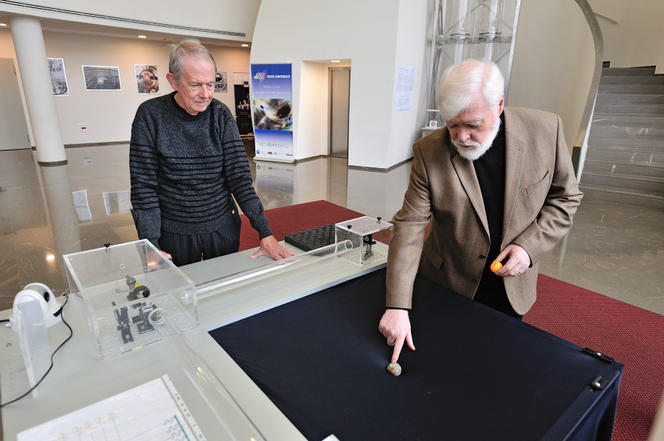
It was Brillet who convinced everyone, including the champions of the LIGO experiment, to adopt infrared lasers, which offer greater stability. It was he, with his team, who demonstrated the necessity of a simulation program to specify the optics of the interferometers, a program that would be passed on to US research teams in 1990. And it was him again whose tireless efforts made it possible to obtain the low-absorption silicon needed for the instruments’ mirrors and lenses. Lastly, he was the one who persuaded the CNRS to set up a laboratory, directed by Jean-Marie Mackowski, to develop optical equipment with the degree of reflectivity required by Virgo and LIGO.
Detecting the first waves
The construction of the Virgo facility in Cascina, near Pisa, was completed in 2000, and in 2005 the instrument was installed and assembled. At first, however, it was not sensitive enough and the detectors remained silent. It was therefore dismantled in 2011 and replaced by a new interferometer ten times as powerful, which in August 2017 detected its first gravitational waves.
Meanwhile, the second-generation LIGO detector had started operation two years earlier than its European counterpart and spotted its first “space-time waves” in September 2015. Although LIGO and Virgo share data and co-sign all publications, certain members of the Virgo team could not help but feel bitter.
“Still, we can’t complain,” says Brillet, who in 2016 was awarded the Ampère Prize by the French Academy of Sciences, and who retired from physics three years ago for health reasons. “My greatest source of satisfaction is the instrument. When it ran successfully for the first time, I knew that we had not done all that work for nothing.” An understatement, considering the results: the project has proved that the waves imagined by the father of relativity a century ago do in fact exist, thus opening a new window on the understanding of the Universe—much more than just a nice memory!
Thibault Damour, space-time theoretician
Bookshelves stacked to the ceiling, huge piles of papers, a blackboard covered in equations… The spacious office at the IHES (Institut des Hautes Etudes Scientifiques) where Thibault Damour receives visitors fits the image of the theoretician secluded in his own world, with no other company than mathematical abstractions. Or would fit the image, were it not for the photo of Albert Einstein topped by a Dali-style soft watch. “I’m a physicist in the truest sense of the word, always observing,” says this specialist in general relativity.
Damour starts the conversation by presenting a copy of the file submitted by Alain Brillet to the CNRS in 1982 to explain his gravitational wave detector project. These tiny wrinkles in space-time were observed for the first time in 2015, a breakthrough made possible in large part by Damour’s theoretical work, for which he was awarded the 2017 CNRS Gold Medal. The distinction comes as the culmination of an entire career devoted to Einstein’s theory of gravitation.
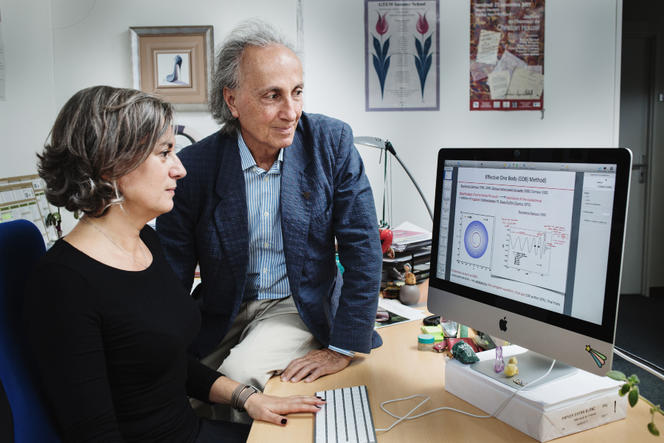

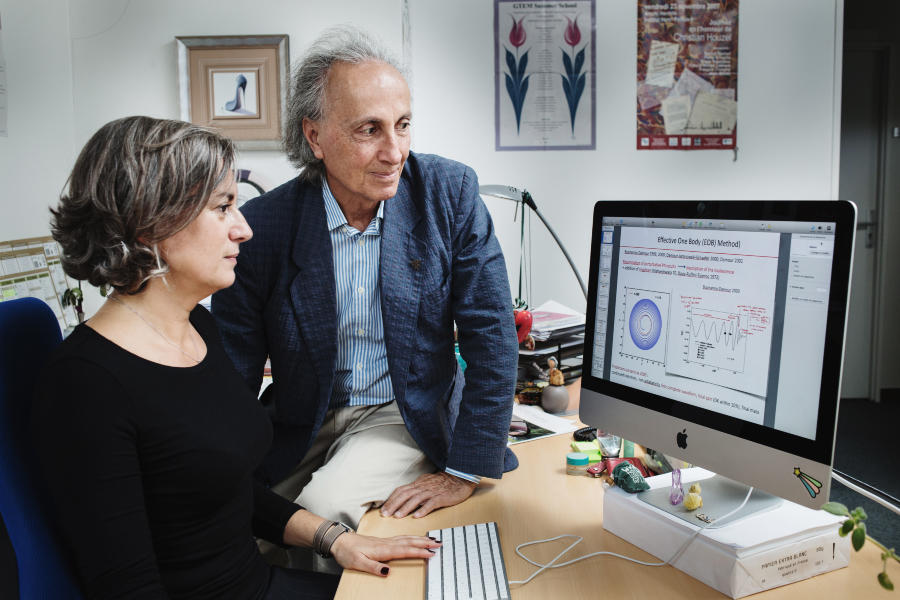
Pointing out an error by Einstein—at the age of 14
His was no ordinary childhood. The youngest of a family of nine children, as a boy Thibault Damour devoured the physics books of his brother, seven years his senior. By the age of 14, Bourbaki's mathematics held no secrets for him; he had also worked his way through the famous Landau physics course, and even spotted an “error” in an article by Einstein! “I was fascinated by the attraction between two bodies in general relativity, which raises questions about the foundations of gravitation, and thus of space and time,” recounts the 66-year-old physicist.
After studying at the École Normale Supérieure and completing a highly technical PhD thesis “on problems that seemed to be of no interest,” he crossed the Atlantic to study the physics of black holes at Princeton University from 1974 to 1976. “Those two years were crucial,” he says. “Working with scientists like Remo Ruffini and John Wheeler, I realized the importance of intuition in physics.”
First intuitions about waves
It was also during his time in the US that Damour heard about Joseph Taylor's discovery of the first binary pulsar, a double star system consisting of a pulsar and a neutron star. “I knew straight away that this was a physical example of the theoretical problem that had intrigued me since childhood,” he says.
In 1918 the father of relativity posited that the orbital period of this type of system would decrease over time due to the loss of gravitational energy, but there was no tangible scientific evidence to support the prediction. Back in France, with the help of Nathalie Deruelle, a CNRS senior researcher and a member of the Laboratoire AstroParticule et Cosmologie (Université Paris Diderot), Damour set out to demonstrate that the phenomenon is indeed a counter-reaction to the emission of gravitational waves. “This tricky problem, touched on by many contributors, required three years of work, made possible in particular by the long-term framework provided by the CNRS, which I joined in 1977,” recalls the physicist, who became a tenured professor at the IHES in 1989. Confirmed by Taylor, the evolution of the binary pulsar’s orbital period is the first proof of the existence of gravitational waves, a breakthrough that earned the US astrophysicist and his student Russell Hulse a Nobel Prize in 1993.
Damour and Taylor worked together for a few years, conducting a number of tests of general relativity—one of the highlights of the French researcher's career. “I remember our collaboration here at the IHES back in 1991,” he says. “When I told Joe that I had a new prediction, he immediately brought out his data, and we verified the results together on a computer screen!”
The winner of the 1996 Einstein Medal of the Albert Einstein Gesellschaft, Damour never forgets to mention his collaborators, emphasizing the importance of brainstorming, and free-ranging discussions during long walks in the woods… “The best ideas often come from complementary minds,” he insists, “like striking two pieces of flint together.”
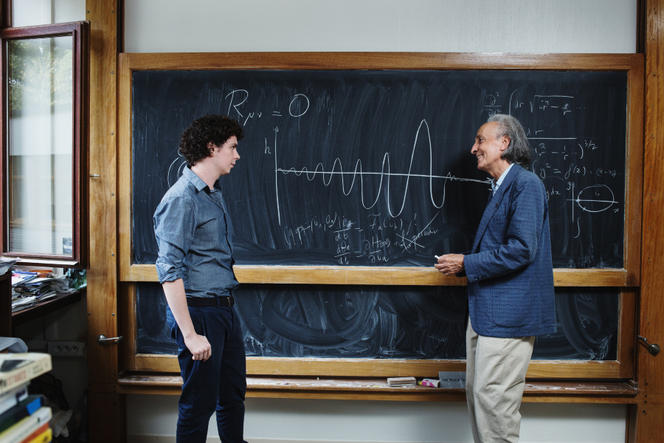
Original predictions on the shape of signals
In 1982, Damour’s imagination was sparked by a session at the École de Physique des Houches, where physicists have gathered since 1951 to discuss the latest advances in their discipline. The participants began talking about gravitational wave detectors, and it became clear to him that a theory was needed for predicting the form of such emissions, regardless of the source. He subsequently developed several complementary approaches to the problem, including what is called the Effective One Body (EOB) method. In the early 2000s it was used to give the first description of the specific shape of the signals emitted during the merger of two black holes orbiting each other—signals that the LIGO interferometers would detect 15 years later. The EOB remains key for analyzing the data generated by the LIGO-Virgo interferometer network. “I was very lucky that nature offered this possibility for testing the predictions,” says the laureate of the 2016 Special Breakthrough Prize in Fundamental Physics.
In recent years Damour has ventured into more speculative territory, especially pre-Big Bang physics, a field that he approaches in terms of string theory, seeking to formally reconcile general relativity and quantum mechanics. “It’s the only part of my work that is unrelated to the real world,” he comments. This research has nonetheless enabled him to predict possible violations of the equivalence principle (according to which all bodies fall with the same acceleration), which can now be verified by experimentation.
As the theoretician puts it, “what I'm interested in is this mysterious universe we live in.” Also keen on philosophy and metaphysics, and an accomplished pianist, he knows that there is more to life than science. “But I take it very seriously, in the sense that, like Einstein, I believe that theories are what make reality” —hence his profound awareness of his responsibility as a physicist: “If you have the possibility, as I do, of conducting research of your own choosing, you must try to contribute to the investigation of far-reaching questions.” And to share your knowledge, according to this author of several books aimed at the general public: “I think of myself reading Einstein as a teenager, and I feel a duty to pass on that passion.” His is a nearly emotional relationship with science, reaching far beyond the equations that cover the walls of his office.
- 1. Alain Brillet is currently a CNRS senior research emeritus at the laboratoire Artemis (CNRS / Université Nice Sophia-Antipolis / Observatoire de la Côte d’Azur).
- 2. École supérieure de physique et de chimie industrielles de la ville de Paris.
- 3. The high energy physicist Patrick Fleury chaired the evaluation committee of the Virgo project in 1989.
Explore more
Author
Born in 1974, Mathieu Grousson is a scientific journalist based in France. He graduated the journalism school ESJ Lille and holds a PhD in physics.


